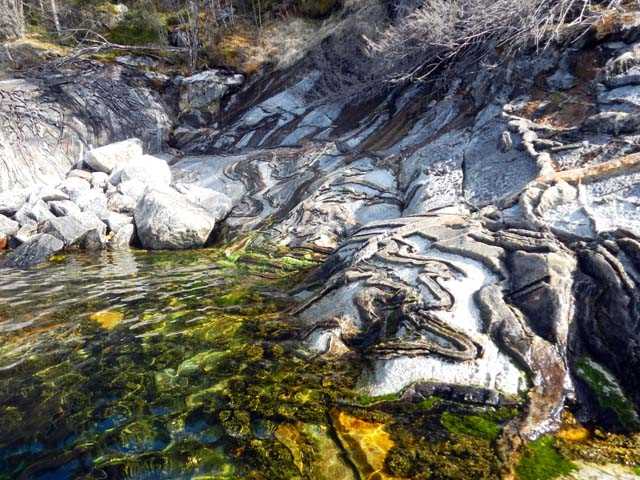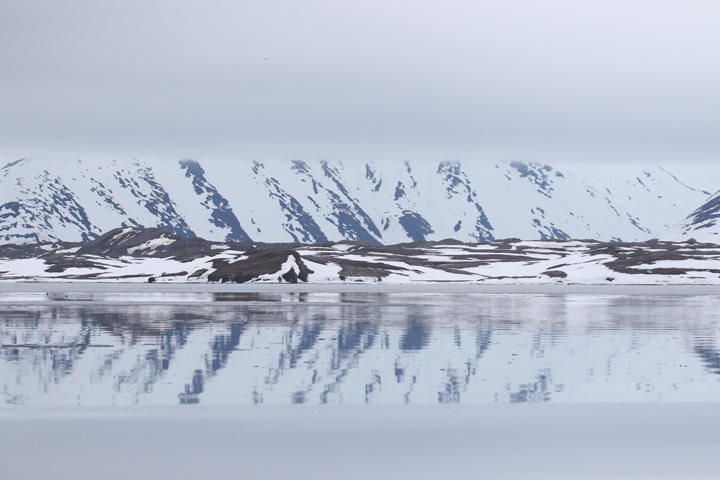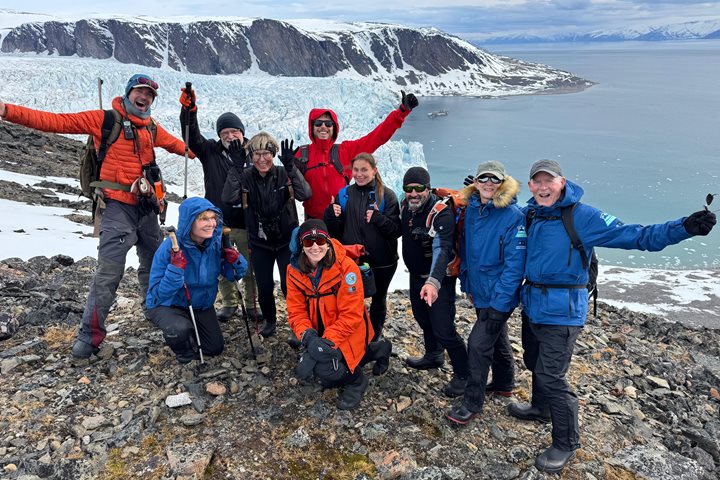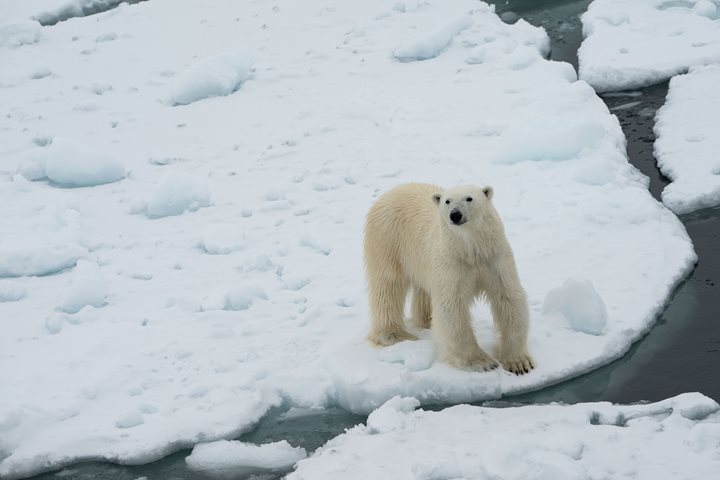Today began with a visit to the Lomsdal-Visten National Park at the end of a long fjord in Storbørja, Norway. We anchored at the head of the fjord and enjoyed hikes of several distances into the mountains behind the fjord. On the longer walk, several guests saw a moose crossing the river. We also were able to take Zodiac cruises along the steep walls of the fjord. The rocks of the fjord walls are carved by the glaciers and show the glacial striations cut into the very hard gneiss which makes up most of Norway. The rocks also exhibit magnificent examples of folding created 410 million years ago when the precursor of the Atlantic Ocean, the Iapetus Ocean, closed as Greenland and North America collided with Europe and formed the Caledonian Mountains typical of Scotland, Ireland and Norway. On the cruises we also observed several of the majestic white-tailed eagles which were soaring overhead.
In the afternoon we re-positioned National Geographic Explorer to Vega Island, a UNESCO World Heritage Site on the Norwegian coast. We explored the little town of Nes, which is comprised of traditional brightly colored buildings, including a very interesting museum and shops where the local residents explained how they gather and use eiderdown from the many eider ducks we saw swimming in the bay offshore. Guests had the option of taking part in another hike on Vega Island, again with various distances, or they could go on a birding and photography walk along the rolling hills of the island.
We enjoyed a special treat on the island too: a demonstration of cooking marine animals, like sea urchins and limpets, over a barbecue in one of the traditional buildings located along the rocky shore.









